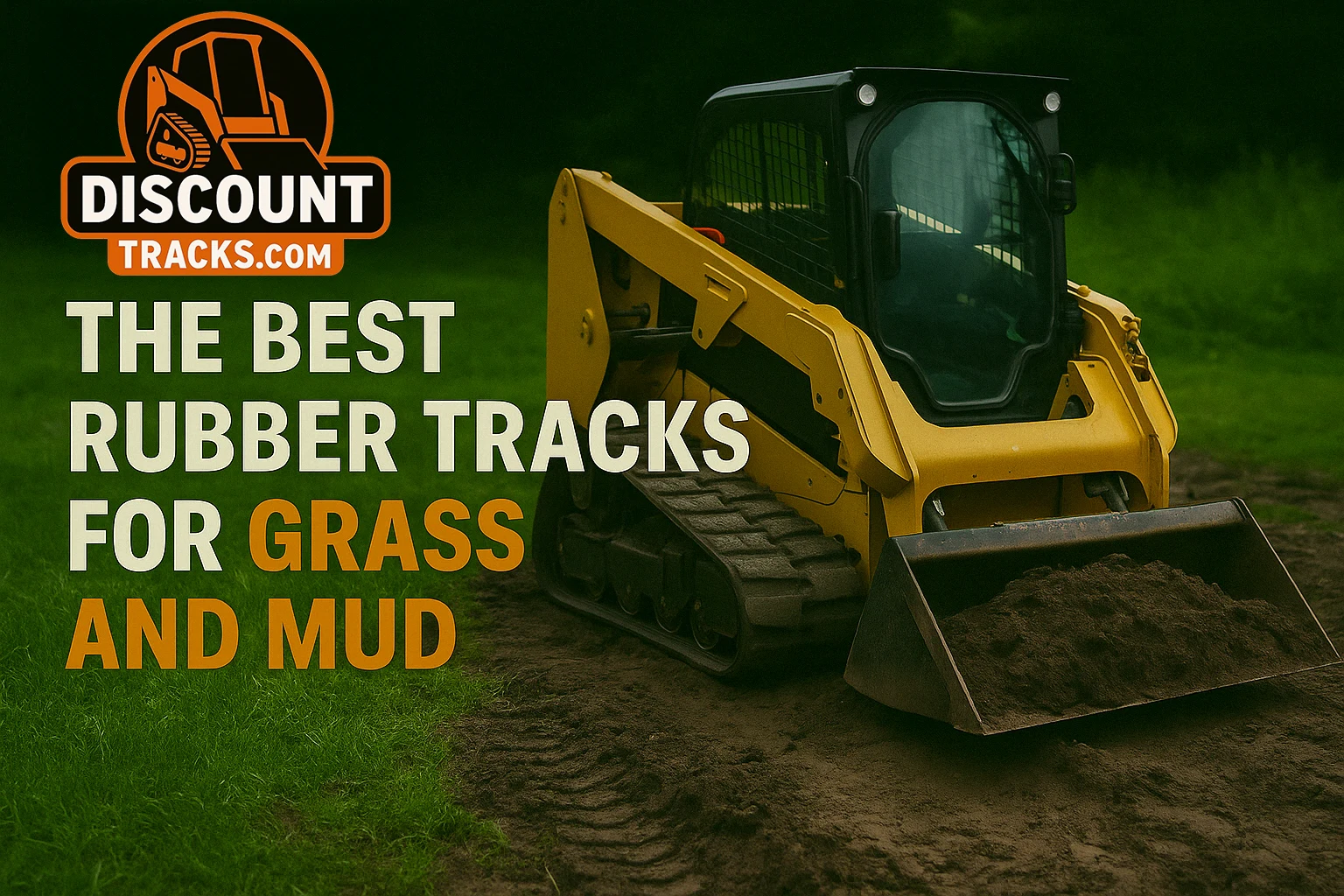Moving from a manicured lawn to a soggy construction site is a common challenge for many operators. Landscapers, contractors, and farmers alike often need to transition between grass and mud without switching machines or tearing up turf—or worse, getting stuck.
But here’s the problem: Tracks that protect grass often lack the traction needed for mud, and vice versa. That’s where smart track selection comes into play. This guide breaks down the best rubber tracks for grass and mud, helping you choose tread patterns that strike the right balance between turf care and muddy grip.
The Conflicting Demands: Grass vs. Mud
Grass and mud place very different demands on your equipment:
- Grass/Turf: Needs low ground pressure to prevent rutting or damage. Smoother treads and wider tracks help protect turf integrity.
- Mud: Demands deep, aggressive lugs and open voids to prevent slippage and allow mud to clean out. Traction and self-cleaning are key.
To work well on both, you need a versatile track—or choose based on your primary terrain.
Choosing the Right Tread Pattern: A Balancing Act
Interpreting the Tread Pattern Guide for Turf & Mud
Our Tread Pattern Guide uses a checkmark system to show which patterns work best for different terrains:
- Turf: Bar, Non-Metal Core, Mini Excavator patterns score high.
- Mud: Zig Zag and Bar patterns earn top marks.
You’ll notice some patterns perform well in one but not the other. However, a few offer decent performance in both.
Patterns Excelling on Grass (Low Ground Disturbance)
- Bar Pattern: Offers good flotation and a smooth profile that’s gentle on turf.
- Non-Metal Core: Often lighter, which reduces turf compression.
- Mini Excavator Patterns: Versatile and commonly turf-friendly.
Patterns Dominating in Mud (Maximum Traction)
- Zig Zag Pattern: Angular design digs into soft ground.
- Bar Pattern: Dual benefit—grips mud and performs well on turf.
Finding Versatility: The Compromise Patterns
The Bar pattern stands out for receiving favorable ratings in both Turf and Mud categories. It provides:
- Moderate traction for mud.
- Smooth enough contact for turf.
- Self-cleaning design elements.
It’s not the best in extreme mud or delicate grass, but it’s a top contender for mixed conditions.
Tip: Consider your ratio of grass-to-mud work. Prioritize accordingly.
Other Factors to Consider
- Track Width: Wider tracks distribute weight better, helping with both flotation in mud and turf protection.
- Track Quality: Look for durable rubber and reinforced construction to stand up to variable terrains.
Discount Tracks: Versatile Solutions for Mixed Terrain
At Discount Tracks, we offer:
- Bar lug and all-purpose patterns ideal for grass-and-mud transitions.
- Specialized turf tracks for sensitive lawns.
- Aggressive mud tracks for high-traction jobs.
Whether you need balance or specialization, our team helps you match your equipment with the best value rubber tracks built to last.
Conclusion
Navigating grass and mud with the same machine doesn’t have to be a hassle. The best rubber tracks for grass and mud combine traction, turf care, and durability.
Understand your terrain, consult our Tread Pattern Guide, and prioritize features that matter most for your work.
Tackle turf and tough ground with confidence.
Explore Discount Tracks’ selection of versatile rubber tracks, or contact our experts to find your perfect match. We’re here to help you choose grass and mud tracks that protect your site and your bottom line.


